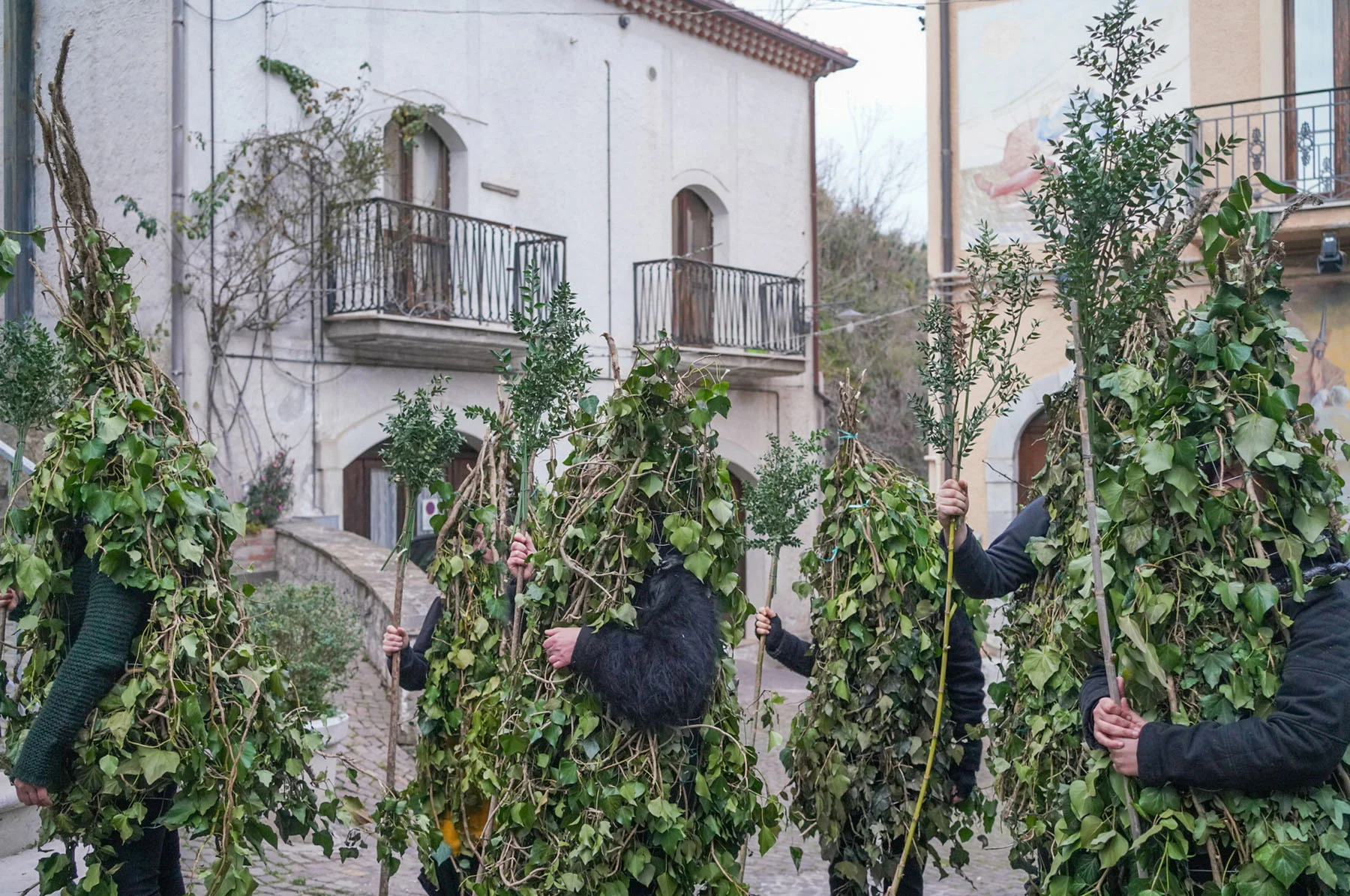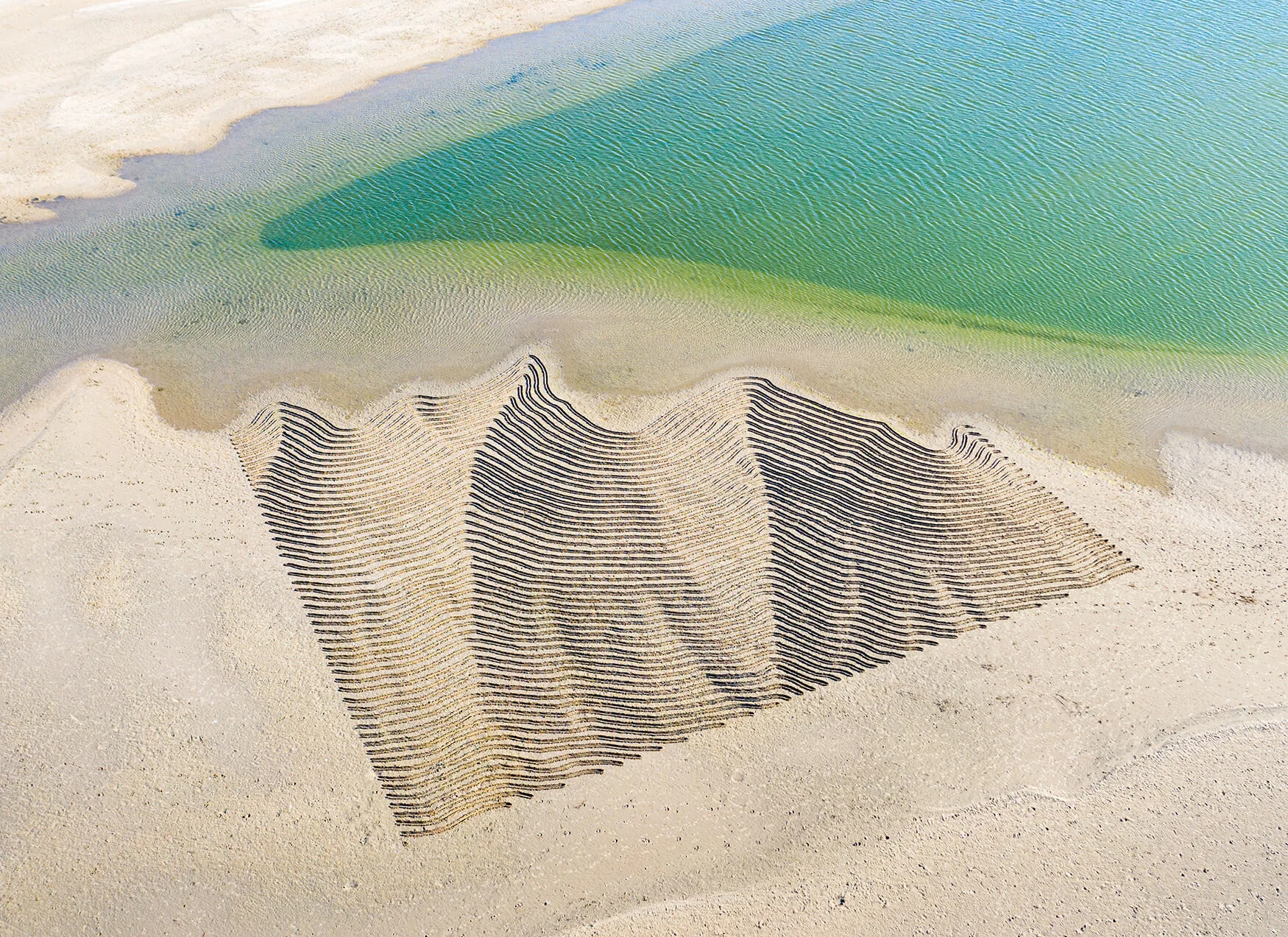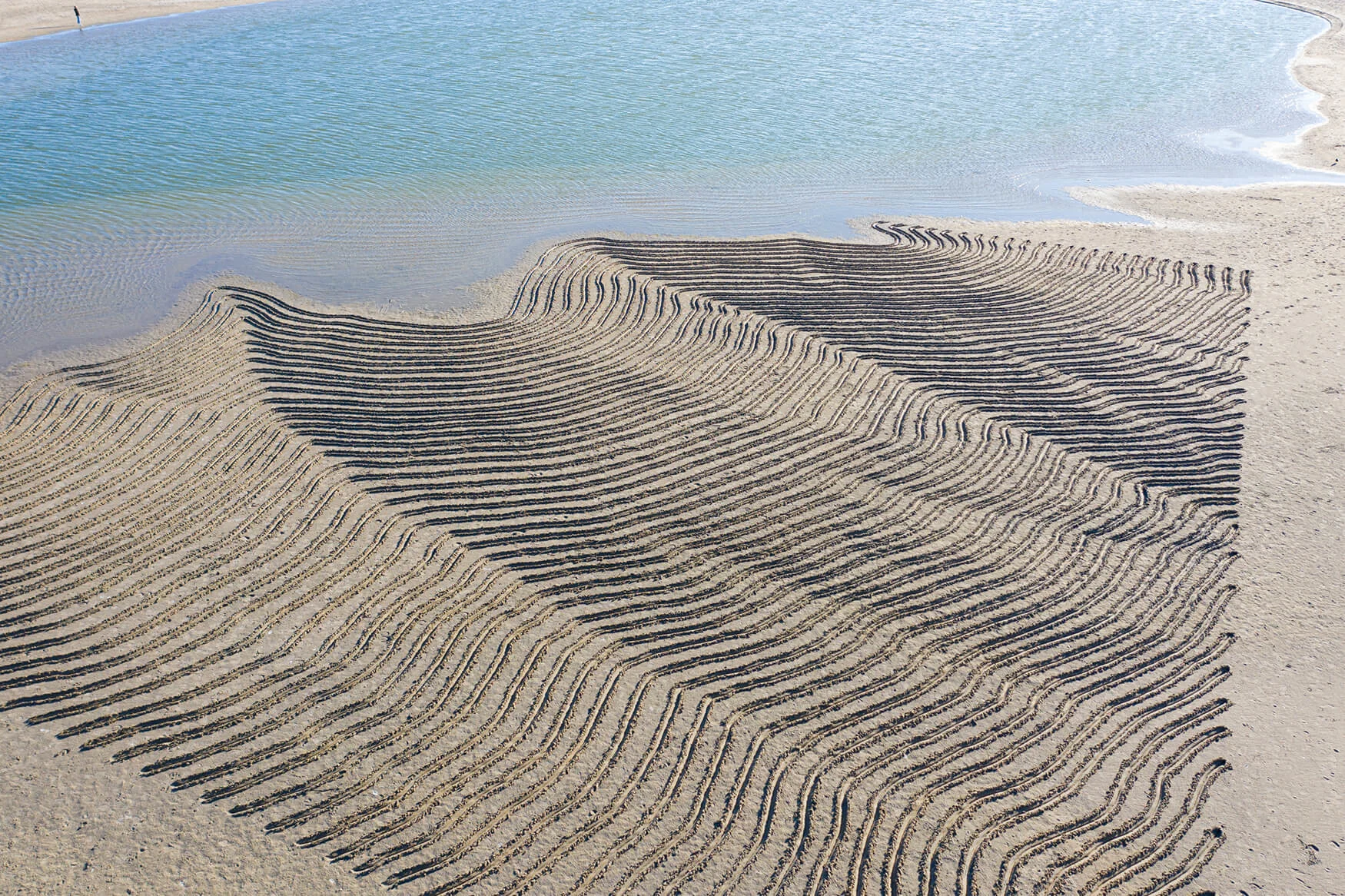
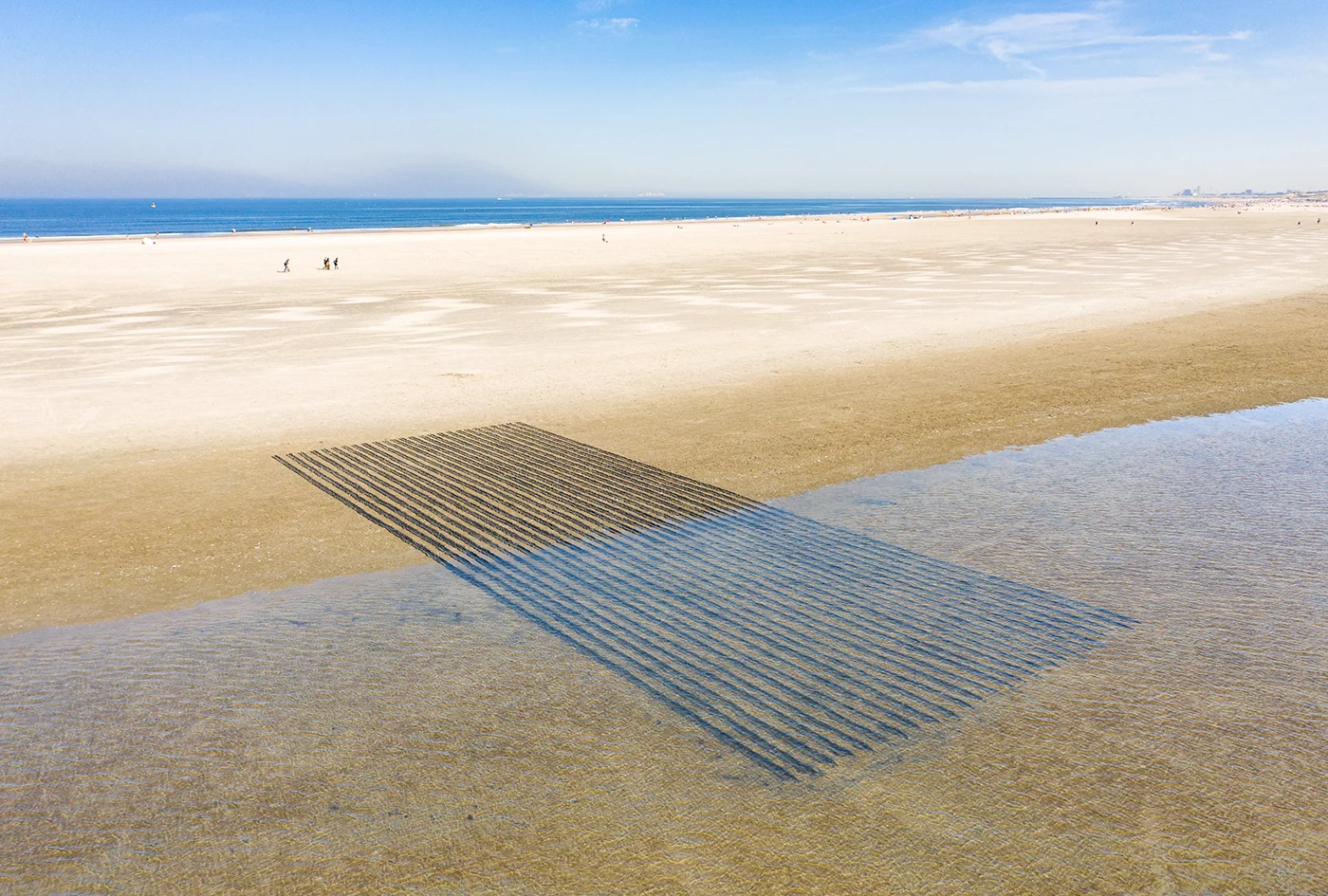
Nico Laan creates enormous sand paintings that pop up all along the coast of the Netherlands. The drawings are an example of anamorphosis at work. In other words, they may appear distorted or unfinished, but when Nico photographs them from a certain angle with his drone, they can be seen as he intended. Nico’s process is a perfect marriage between people and nature, from the natural materials he uses to the final act, when the elements move in and erode the artworks until they disappear from view.
At the start of every year, teacher Nico Laan would take his art school students to the beach so they could make drawings in the sand. He used to fly a kite overhead with a camera attached to capture their work from a bird’s eye view. “One of the students drew a cube that seemed to stand out from the rest of the work,” he says.
Nico got to thinking about perspective, and he wondered whether he could make works in the sand that would only appear complete when viewed from a specific angle. This effect is called anamorphosis, when a drawing at first appears distorted, and becomes visible only when viewed from a particular vantage point. Since that moment, he’s been returning to the beaches regularly, making tens of works of art and photographing them from the sky.
With his first attempts, his focus was for each work to “pop up,” to look as if it were standing upright on the beach. He began with simple pieces, a giant chess rook standing to attention, a trap door with a ladder that seemed to offer the chance to climb down deep into the sand. Depending on their size, each piece can take between four hours and three days of work at the beach, but the real preparation begins at home in front of the computer.
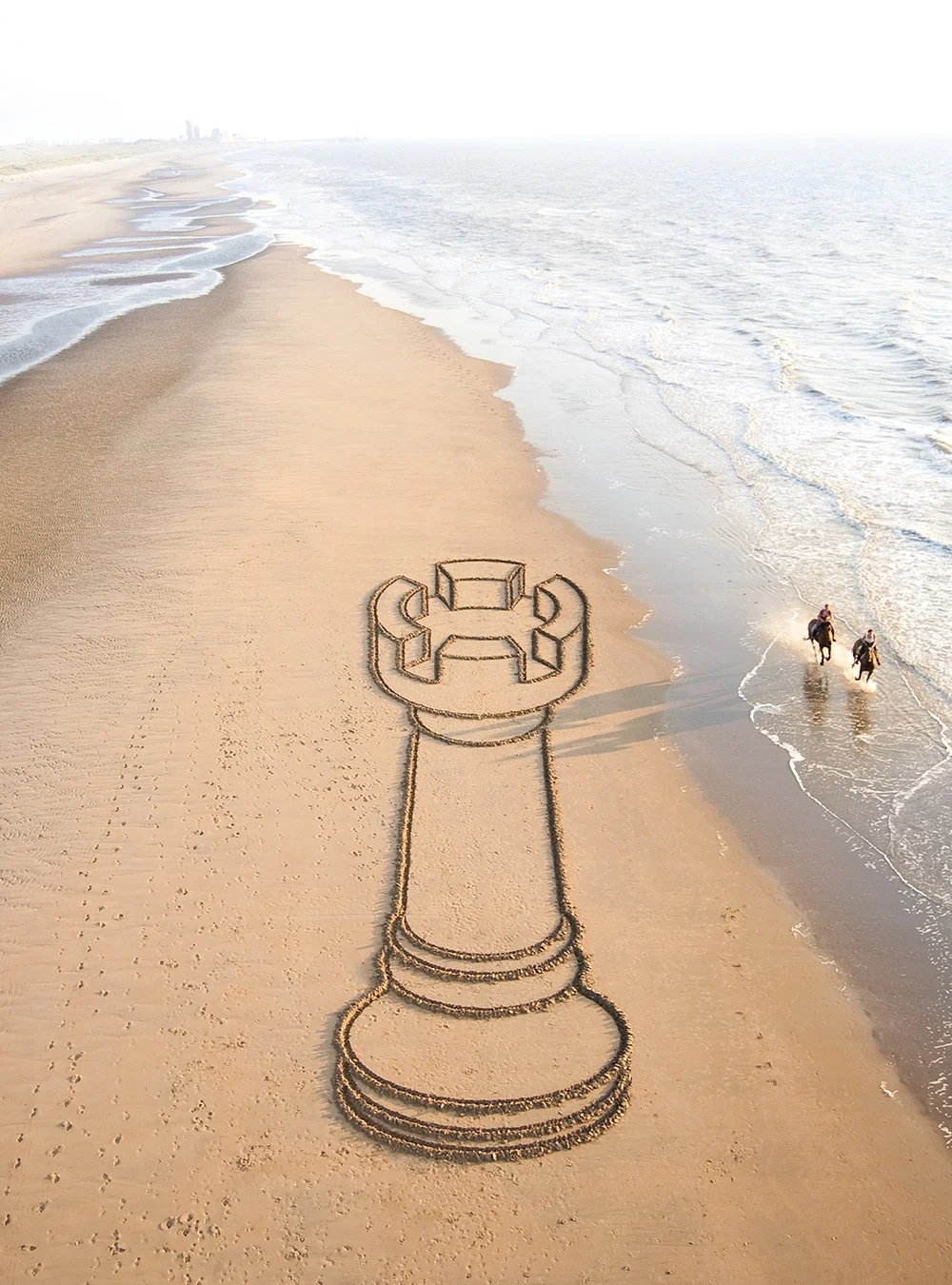
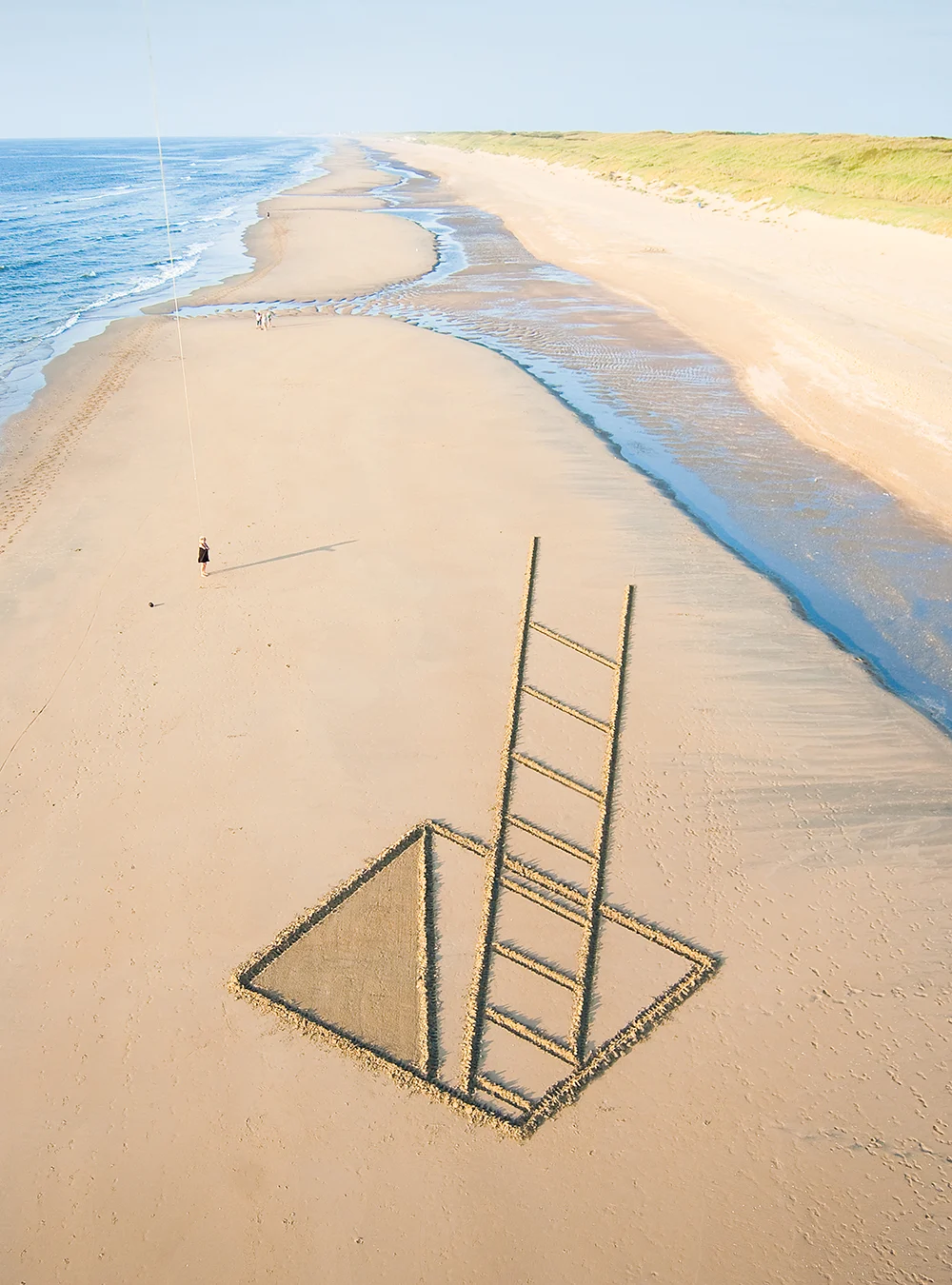
You know most of them will only be there for a few hours.
The width of each line and the distance between every shape has to be meticulously planned out, to make sure that the drawings appear as intended from the sky. “It’s quite easy to sit at your computer to manipulate a shape and understand the distances and dimensions you will have to work to,” he says. “When you get to the beach, the reality is, the scale is so much bigger.” Once he arrives at the beach, he uses lengths of rope and measuring equipment to draw the outline, and he’s made giant compasses and protractors to help him create perfect curves.
Besides these instruments, all the materials Nico works with are there when he arrives. “I don’t want to bring other materials into it,” he says. “I only move and change the elements that are already there.” Beaches aren’t the only natural landscapes he works with. He’s committed to turning any everyday place into a work of art, working with stones in lava fields in Iceland, and even altering crops in rapeseed fields.
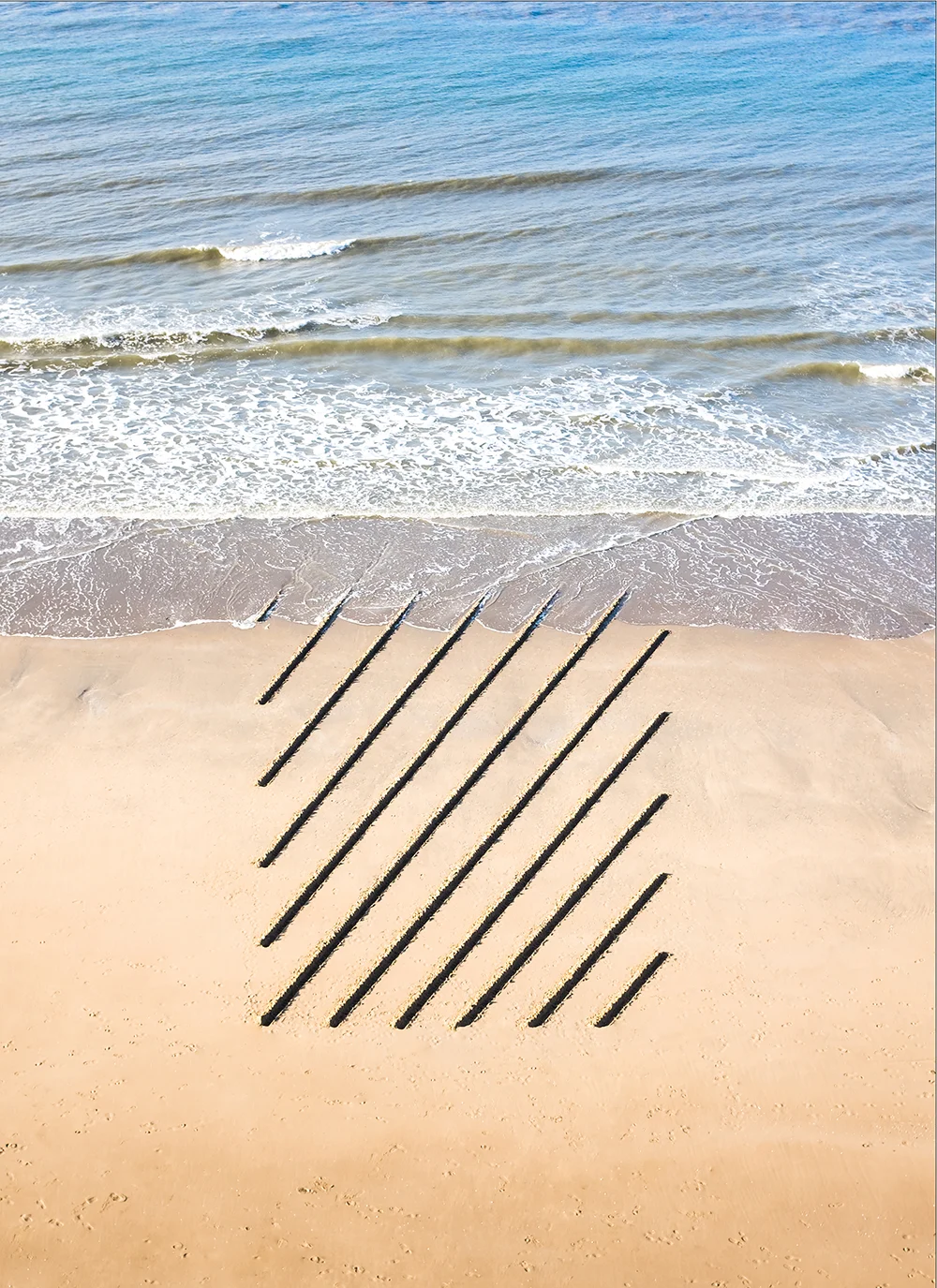
The inspiration for the pieces is a natural process, as the discoveries he makes while doing each one inspire the next. “Unexpected things keep happening, and it brings you new ideas,” he says. While working on a piece depicting a chess board, he showed the different squares on the board by using a rake on the sand in half of them to show a different color.
Through this he learned that raking in different directions would create entirely different tones and colors. This knowledge came into use in 2019 for one of his most striking works, Sandmen, which was 60 metres long. Appearing almost like a painting, he created four completely different colors in the piece, simply by using a rake in different ways. “I rushed this one because the tide was coming in quicker than expected. But the next day, when the sea had come and gone, even the thin lines were still very visible,” he says.
We started waiting for things to go underwater, to see what effect it might have.


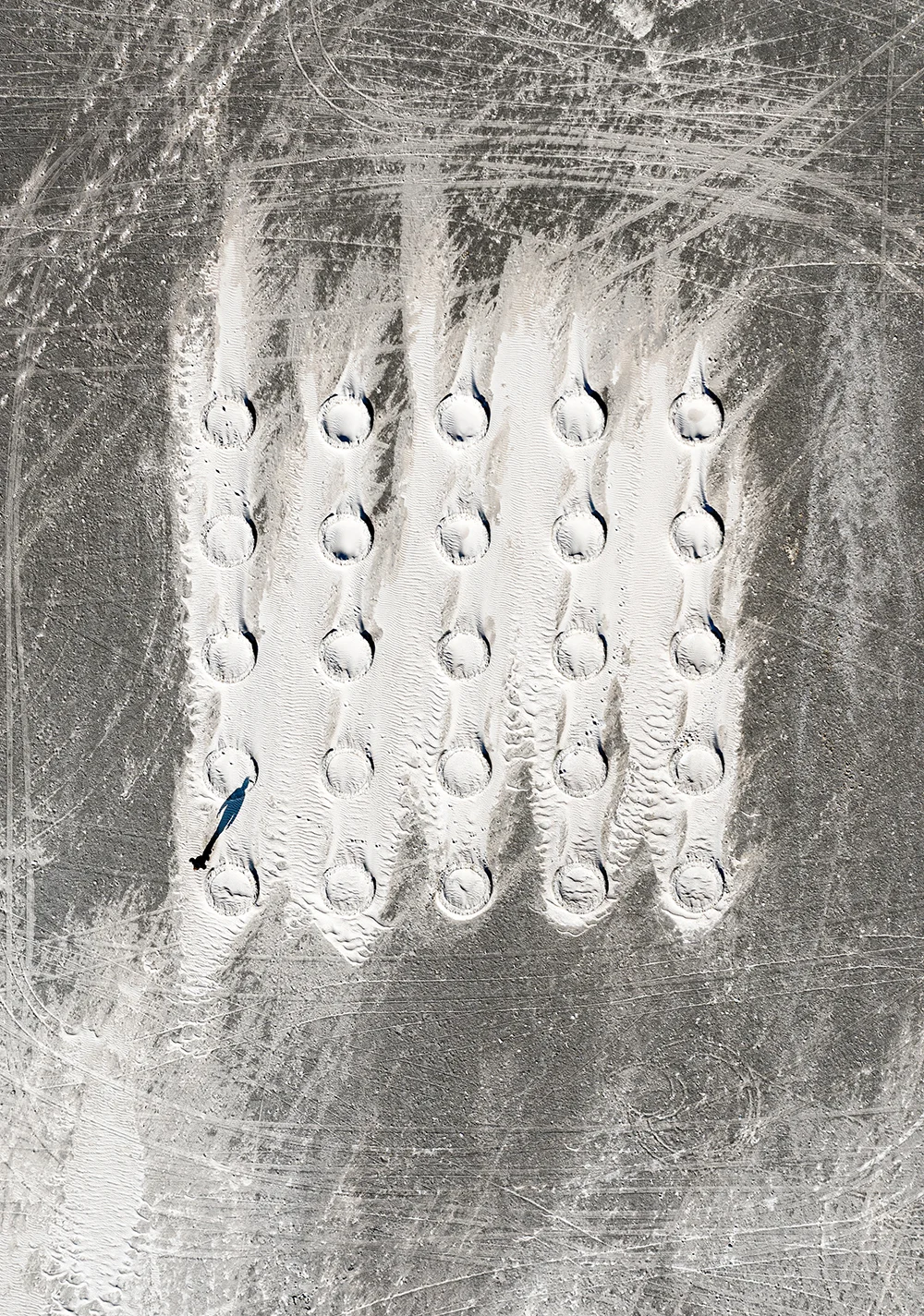
Nico had previously been resigned to the idea that once nature had its way, his pieces would disappear, but this work’s lasting life gave him a new perspective. “I couldn’t imagine that when water swallows these things, they might still be visible. And once you know that, you can use it,” he says. “We started waiting for things to go underwater, to see what effect it might have.”
He began to design works with nature’s effect in mind. A sheet of perfectly aligned “sand cones” that only became more beautiful as the sun cast their shadows out over the sand, or a collection of craters that, once the tide went back out, remained filled with water which reflected the blue skies above. Even the wind can be a tool for Nico, as it blows the sand to one side and creates an entirely new pattern.
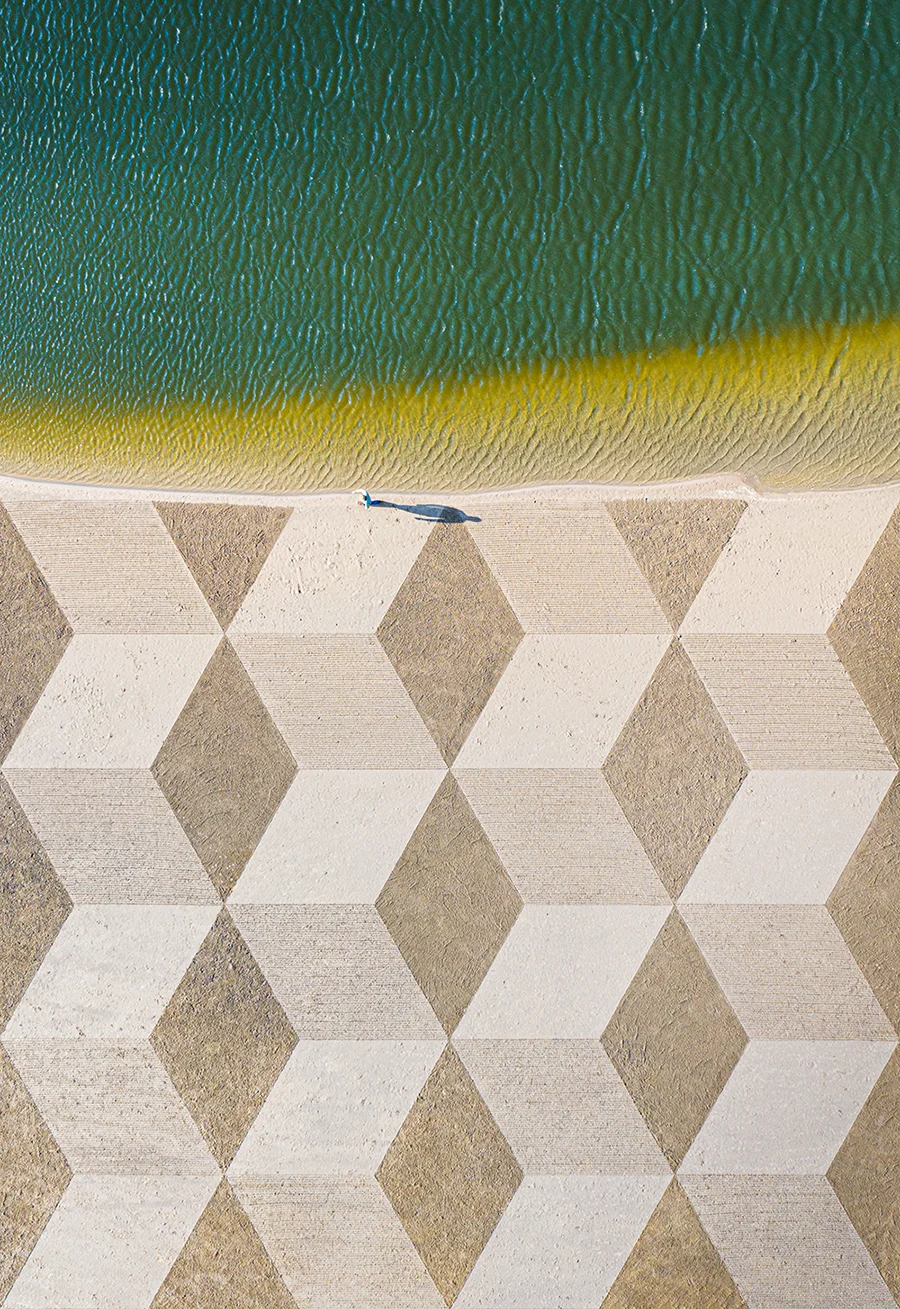
From start to finish, Nico’s work is a perfect marriage between people and nature. Working with the natural things he finds on location before, in the end, the elements have their way with his art.
As beautiful as it is that nature can affect Nico’s creations in these interesting ways, nature is also the thing that will eventually make them disappear. “You know most of them will only be there for a few hours,” he says. “Even the ones that aren’t within range of the tide will be gone within a few weeks.” This only makes the works more special. Each one has a short lifespan, visible on the coastline for a fleeting moment, before fading and fading until it seems it was never there at all.
